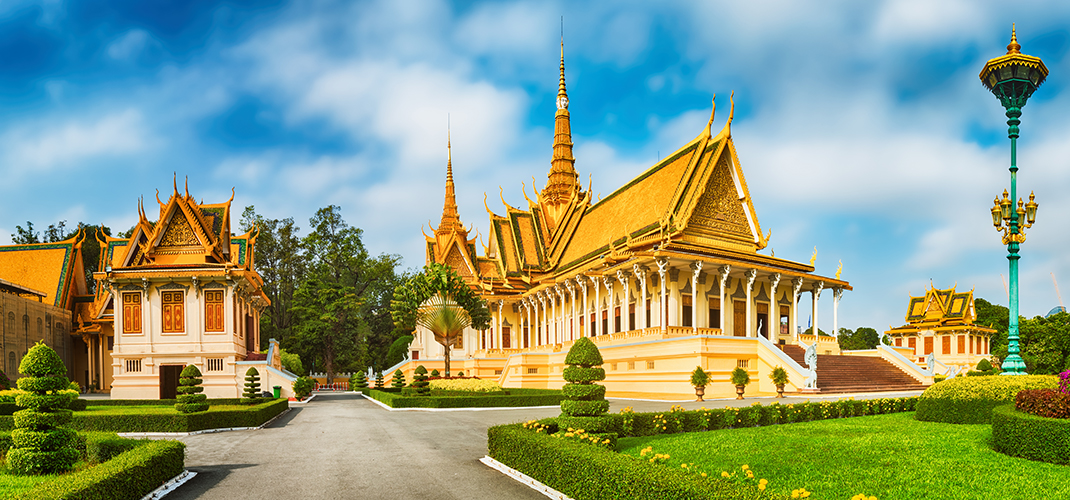Cambodia

Cambodia’s landscape spans low-lying plains, the Mekong Delta, Tonle Sap (Great Lake), Mountains and the Gulf of Thailand coastline. The country has a coastline of 435 kms and extensive mangrove stands, some of which are relatively undisturbed. With a population of about 10 million people only 10% live in Phnom Penh, making Cambodia largely a country of rural dwellers, farmers and artisans.
Phnom Penh is the vibrant bustling capital of Cambodia. It is home to the art deco Central Market, glittering Royal Palace, the Silver Pagoda and the National Museum, the Toul Sleng Genocide Museum, the Choeng Ek Killing Fields and Wat Phnom. There are also several market places selling carvings, paintings, silk, silver, gems and even antiques. This city exudes a provincial charm and tranquillity with French colonial mansions and tree lined boulevards amidst monumental Angkorian architecture.
Battambang is Cambodia's second largest city, founded in the 11th Century. Battambang city is a peaceful place with a network of charming old French shop houses clustered along the riverbank. There are a number of Wat’s scattered around the town and the main parts of the city are situated close to the Sangker River, a very tranquil and picturesque setting.
Siem Reap is the major tourist hub in Cambodia, located on the shores of the Tonle Sap Lake, the greatest sweet water reserve in the whole of Southeast Asia. Just 6 kms from Siem Reap are the ruins of Angkor Wat, a massive stone temple complex built during the Khmer Empire and the 7th Wonder of the World. Angkor Wat, in its beauty and state of preservation, is unrivalled. Angkor Wat, the largest monument of the Angkor group and the best preserved, is an architectural masterpiece. Its perfection in composition, balance, proportions, relief's and sculpture make it one of the finest monuments in the world.
Sihanoukville is a small southern province of Cambodia. The capital sits on a peninsula with beaches and tropical islands around. Sihanoukville also known as Kampong Som was founded in 1964. It is gradually being redeveloped as a tourist attraction with sand beaches and several paradise islands that include Ohchheuteal, Sokha, Pram Pi Chan and Deum Chrey. To enjoy the views over the city, climb the small hill to Wat Leu. Close to town there are nice places such as the Ream National Park and the beautiful Kbal Chhay Waterfall.
Kampot has an eighty kilometres coastal strip and sits near the base of the abundant green Elephant Mountains and the famous Bokor Hill Station. Kep Beach, Rabbit Island, Bokor Hill Station and countryside tours including pre-Angkorian ruins, caves, jungle trekking, cycling, river cruises, island trips, fishing trips, isolated beaches, pepper plantations, bamboo train rides are all to be found here. It is also renowned for the quality of its fruits (durian, coconut and mango), its sea salt and of course the famous Kampot Pepper.
Ratanakiri is located in Cambodia's far northeast. While you won't get any bragging rights for coming up here, it's well worth the effort. Its dusty capital, Banlung, is located in the central highlands of the province and reminds one of a wild western city, even if it's the wild east. Yeak Laom Volcano Lake is a beautiful place with exceptionally crystal clear water, great for a swim, picnic or hike around the crater rim of the old volcano.
Khmer food is one of the major national identities that reflect the ways of life, thought, and mind of the Cambodian people which are hidden in the taste of consumption of meat dishes and sweet food. Cambodia has been rich in a variety of plants and crops since ancient times so that we could cook many types of foods suitable for each group of different people.
